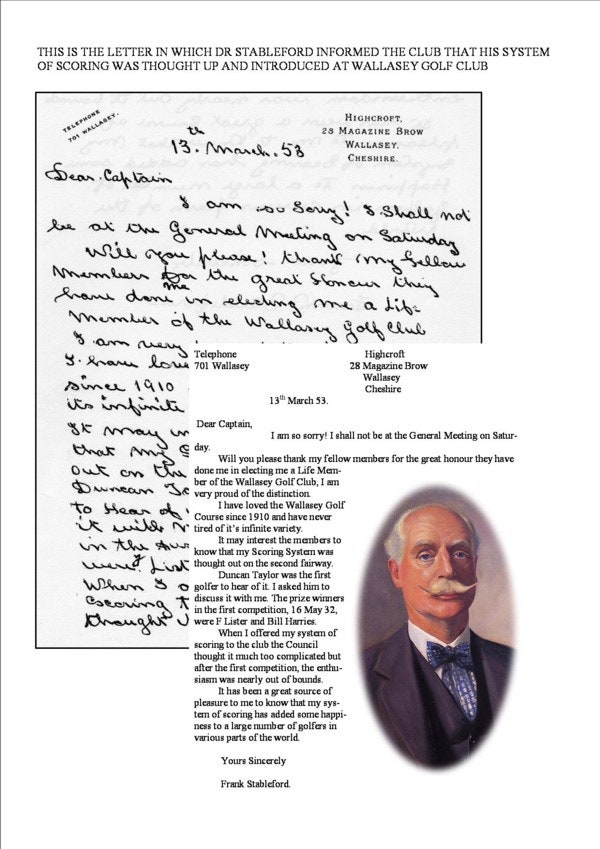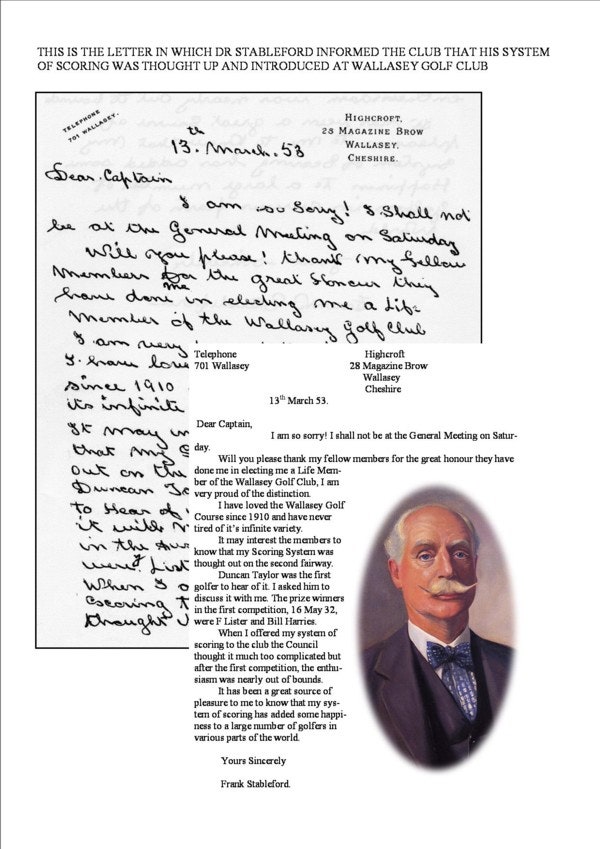
The Coronavirus pandemic has hit a giant pause button on fans being able to watch golf on TV, and in some cases, even kept people off courses. But while we hunker down and hope for a speedy return to normalcy, we can also use this time as an opportunity to learn more about the game we love. Here’s our latest installment of “Did you know?”
Whether you play in a Thursday Night men’s league or one of the few professional tournaments that utilize his scoring system, you’re probably a fan of Dr. Frank Stableford. That’s because if you don’t know the name, you probably do know his scoring system—the one that allows you to stink on a few holes and do really well on a few holes and be all the better for it.
The Stableford Scoring System is based on earning points on each hole, rather than worrying about strokes taken. It was developed by Stableford in 1898 but wasn’t used in competition until more than three decades later at Wallasey Golf Club in England. The idea being not to allow one or two bad holes completely ruin your round (and we all know we’ve been there).
So who is this guy, Frank Stableford?
According to a bio on the Wallasey Golf Club website, Stableford was a pretty good stick. A plus-1 handicapper who won the club championship at Royal Porthcawl in 1907.
Stableford was fond of Rolls Royce’s and bow ties and sported a handlebar mustache Rollie Fingers would have been proud of. He also had a pretty intriguing life. As Peter Corrigan wrote in a 2008 article in The Independent, “He was an army surgeon and served in the Boer War, the campaign against the Mad Mullah of Somaliland and the First World War before moving from South Wales to Merseyside, where he became one of Wallasey’s famous members.” Club records from 1922 show his game had gone south a little as he now played off 8.
Perhaps it was that decline of skills that led to Stableford fine-tuning his idea. "I was practicing on the second fairway at Wallasey Golf Club one day in the latter part of 1931 when the thought ran through my mind that many players in competitions got very little fun since they tore up their cards after playing only a few holes and I wondered if anything could be done about it," he said. The first Stableford competition was held at Wallasey on May 16, 1932 and it was hit with golfers.
There is straight Stableford and then there is modified Stableford. The only real difference is the amount of points awarded for any given score. Conventional Stableford awards 0 points for a hole score of double bogey or higher; 1 point for a bogey; 2 points for a par; 3 points for a birdie; 4 points for an eagle; 5 points for a double eagle and 6 points if you somehow manage to have Happy Gilmore-like length of the tee and ace a par 5.
Did you know: Why does a golf course have 18 holes.
Modified Stableford often affords more points for birdies than bogeys and double bogeys and thus encourages more aggressive play. That makes it a great format for professional golf. For a number of years, the format was used at The International and then, later, at the Ren0-Tahoe Open which morphed into the Barracuda Championship. For the latter the points are -3 for double bogey or higher; -1 for a bogey; 0 for a par; 2 for a birdie; 5 for an eagle and 8 for a double eagle. The LPGA’s Diamond Resorts Championship offers a couple of additional twists, such as 8 points for a hole-on-one and 10 points for a double eagle. In that event even a triple bogey results in no points lost so in normal stroke play if you went triple bogey-double eagle you’d be even par. But in this modified Stableford it would be 10 points to the good.
For everyday players one of the benefits is it keeps pace of play moving along because if you’re totally butchering the hole you merely pick up and move along.
So thanks, Dr. Frank. You not only allow us to have some fun on Thursday nights, but probably prevented a few slow-play squabbles along the way. As Henry Longhurst once said of his contribution to the sport, “"I doubt whether any single man did more to increase the pleasure of the humble club golfer."

